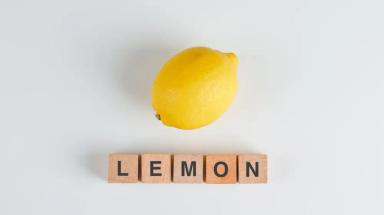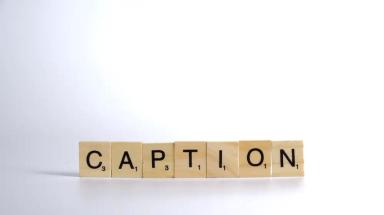Medical Transcription Definition
What is medical transcription?
Well, transcription is the process of conveying audible content into written content. Thus, medical transcription (MT) would mean conveying medical audible content into written content.
The definition of medical transcription includes the transcription of any dictated medical material, from case notes of doctors and other medical professionals to lecture content by a medical transcriptionist, who is a professional transcriber with medical knowledge.
In some cases, medical dictation is done over the phone. Today, doctors' dictation (and that of other medical professionals) is increasingly being provided to transcribers as a voice file via the phone or the internet, thanks to advances in technology.
So, what is the job of a medical transcriptionist exactly? A medical transcriptionist is a transcriber who is well-versed in medicine. This medical knowledge requirement is what distinguishes medical transcription as a specialized field where medical transcribers should have extensive medical knowledge and medical experience.
Medical transcriptionists should dispose of:
-
Extensive medical and pharmaceutical terminology knowledge
-
Experience in the medical field
Get our transcription services now
Types of Medical Transcription
-
Medical Report Dictation
-
Medical Conference Transcription
-
Medical Transcription for Reports (with more than 100 types of reports!)
Besides clinical summaries, lab results, and surgery notes, voice medical reports also include other medical information. The transcribed files are either printed and kept as paperwork or saved electronically.
While we defined medical transcription as a specialized service above, it's also worth noting that there are several specialist disciplines that fall under the umbrella of medical transcription. Different types of doctors and departments deal with different conditions, and so do different types of medical transcribers.
Get our medical translation services now
What is the Difference Between Medical Coding and Medical Transcription?
When you visit a doctor for any reason, a medical record is created. This medical record may include your symptoms, tests performed, diagnoses, and treatments. The whole procedure is entirely documented!
OK, what does coding have to do with all of this? Good question. Well, a doctor, just like any other human being, would like to get paid after diagnosing you and treating you. How does he get paid?
By what we call diagnostic and procedural codes (International Classification of Diseases).
For instance, you go to the doctor complaining and screaming: “Please help my leg hurts”. This phrase is coded as” The patient has a fracture’: the typical medical standard language that doctors communicate with.
Then a medical coder is responsible for translating these medical languages into numbers.
A standardized coded language that insurance companies, health care facilities, and government agencies all understand.
In our previous particular case, the diagnosis code of a “leg fracture” is “S72.301A”, and the procedural code for treatment is 29345.
You see, all codes!
The result of a medical coding of a leg fracture is a certain code number whereas if we were to transcribe a medical fracture we would hear it from a certain medical voice note and phone code and transcribe to alphabetic code in the related language.
From the Courtroom to the Page: Guidelines for Legal Transcription
Importance of Medical Transcription
Doctors, surgeons, and nurse practitioners have some of the most important yet stressful jobs in the world! Not only do they have the lives of their patients in their hands, but they are also encouraged to pursue their education and to constantly learn in order to be equipped with the most up-to-date medical knowledge and best practices.
Transcribing medical records is considered part of all this! Here is why medical transcription is very important:
1- Above All Else, Accuracy in Keeping & Sharing Patient Information
The importance of medical transcription resides in the importance of having reliable, accurate medical documentation for doctors, physicians, and primary care providers.
As doctors treat patients, they require reliable meticulous medical records in order to quickly and thoroughly assess a patient's condition to determine the best course of action and the appropriate treatment method moving forward. One incorrect step in treatment, one incorrectly prescribed drug, can be fatal. These changes can be reduced to near zero with a professionally curated medical transcription.
Accurate medical transcription allows doctors to refer back to previous treatment strategies and implement follow-up measures with other doctors to ensure the patient does not relapse or worsen as a result of complications. And all of this is not possible without a quite accurate medical transcription.
Doctors are not only the ones who are in charge of patients. Nurses, dieticians, therapists, pharmacists, and other extended support staff are also responsible for ensuring the patient's care and treatment. Medical records are also used to instruct nursing and other support staff on how to care for the patient, what drugs to administer, allergies signs to look out for, samples to take for further testing, and so on.
Transcription Unlocked: Answering the Most Frequently Asked Questions
When you use medical transcription and keep a record of a patient, you not only make the work of allied care providers easier, but you also provide them with vital information that allows them to tailor the care routine to the patient's needs.
In that context, medical transcriptionists prepare patient records to help other physicians involved in interdisciplinary patient care communicate with one another. It facilitates the flow between all of the healthcare providers, allowing for accurate diagnoses and treatment plans.
This is where the role of medical transcriptionists comes in: thanks to medical transcription, accurate medical records will be kept, and everyone within the healthcare facility will have the same accurate information to keep the patient healthy and avoid complications or setbacks.
Ensuring accuracy in keeping but also in exchanging critical medical and treatment information between practitioners, that communication is crisp and vibrant, and that everyone understands it.
It is especially critical for patients who require critical care. Instead of relying on word of mouth or the availability of the doctor, medical transcription will provide dependable and sharable data to the allied healthcare staff.- A life-saving communication!
How to become a certified medical transcriptionist
2- Legal Compliance
While it is uncommon, there is always the possibility that an ailing patient, her kin, or the kin of a deceased patient will approach the judiciary if they believe something went wrong during treatment. Doctors require a safety net in the event of such an unforeseen event.
Medical records not only help ensure that the patient receives proper care, but they also serve as the foundation for legal arguments if complications arise or a lawsuit is filed against the medical provider. The law requires hospitals and other healthcare facilities to keep accurate patient records. It is the single most important piece of documentation in the event of a legal squabble at any point in time.
Get our audio transcription services now
3- A Consistent Approach for Insurance Purposes
Medical records carry the utmost importance. From ensuring proper care is delivered across an entire medical staff to protecting healthcare providers from lawsuits and legal battles, there’s considerable responsibility given to medical transcriptionists.
Trusting them to create accurate, consistent, legally compliant documentation of recorded materials isn’t just essential to the operations and care of your healthcare facility, it’s an important element of billing insurance companies for the cost of care administered.
Medical records form the basis on which health insurance carriers are billed, meaning your facility won’t get paid without the right records. Verifying medical records is an important part of settling a claim with medical insurance. Transcriptions are the most trustworthy documents/files to use for this purpose.
Many patients rely on insurance funds to pay for their medical care. It's heartbreaking to see a patient forego necessary treatment due to the high cost or to see a treatment burn a hole in their wallet. After the data has been transcribed, the hospital billing staff can use that patient record to send to insurance companies for claim settlement.
Get our video transcription services now
4- Maintain a Stress-free Environment
A doctor does not need additional pressure in a demanding and stressful job. If anything, she requires all assistance in order to provide her service with minimal stress.
Medical transcription is the manual or automated assistant that a doctor requires to stay stress-free. Going back and manually checking the previous medical record also takes a long time for someone who is already pressed for time. This time can be used to devote to patient care as well as self-care, which is critical in the highly demanding job of a physician.
Uncovering the Story: A Complete Guide to Interview Transcription
How Hard is Medical Transcription?
You might be asking yourself: “Is medical transcription hard?”, “Couldn’t a non-medical transcriber produce medical transcripts?
Uhhh… well, maybe! but doing so would require spending so much time looking up medical terminologies and juggling between medical references to check accuracy that eventually the work would quickly become unprofitable.
Anyone with access to a medical dictionary or the internet can learn about medical terms. However, understanding the context in which those terms are used requires firsthand experience in the medical field.
Because medical transcription demands accuracy the quicker, the better, a superficial understanding will not be sufficient and will certainly not make transcription faster, easier, or more accurate.
What we are trying to say here is that medical transcription is hard but not that hard. On a scale of 1 to 10, we would say 6.5!
It can be difficult and stressful to break into such a demanding field without medical assets.
Transcription is already a challenging and highly-specialized field that requires attention to detail, and excellent grammar, spelling, and typing skills.
So, medical transcription is equally not as evident as general transcription, because hey, remember? It is MEDICAL transcription, and medicine is never easy.
Get our interpretation services now
Medical Transcription Process
Easy as 1,2,3!
Step 1: Dictating the medical documents
Step 2: Medical transcription is completed by professional medical experts
Step 3: All documents are reviewed and re-edited for accuracy
At least it is how it works at Leaders! We like to keep it that simple because why not?
Leaders Translation Company has earned a reputation for delivering industry-leading results on which healthcare professionals can rely. We have the best accuracy rates on the market thanks to our highly skilled medical transcriptionists and quality assurance specialists!
Contact us today to learn more about our medical transcription process.
Medical Transcription Guidelines and Practices
Basic Medical Transcription Style Guide
It is not enough to be a good listener and a good speaker as a transcriptionist. Medical transcription necessitates more than just accurate data transcription. Medical transcriptionists are expected to be familiar with certain fundamental guidelines.
1- Accuracy
Only type the words heard in the audio file. Enter the exact words spoken. Your medical transcription should be 99% accurate! Use all the references you dispose of to produce the most accurate version of your work.
2- Professionalism
Professional transcription practice standards must be properly maintained.
3- No Paraphrasing
Do not partake. Do not correct or rearrange the phrases you here. You are a medical transcriptionist, not a content writer!
Get a quote now and let our translators bridge the gap between languages!
4- No Additional Information
Do not include any additional information such as numbers, titles, or comments. Such information can be added in separate fields below the transcript.
5- No Verbatim "Clean Up"
Do not remove words that you believe are irrelevant or off-topic. Any outspoken word should be included as it is. Otherwise, check the company's policies to see what should be removed. Include every utterance and sound exactly as you hear it when transcribing verbatim work.
6- Privacy and Confidentiality of Patient Information
With a focus on securing sensitive patient health information, various processes in the medical industry are required to adhere to security standards. Professional medical transcriptionists and transcription service providers must stay current on legislative norms and requirements.
The confidentiality of patient information is a primary requirement for medical transcription companies, and this includes data security in electronic communications.
How to become a certified medical transcriptionist
Medical transcription formats
Medical transcription formatting differs from one country to another, and from one healthcare facility to another.
It should be noted that different transcription companies may have different rules that must be followed. You should confirm and follow the company's rules for whom you’re doing the transcription work.
Medical transcription is more than just listening to and converting voice data into text; it entails significant responsibilities. Even minor mistakes can have serious consequences and endanger lives. As a result, it is critical that medical transcriptionists stay properly trained and up to date with the latest formattings and guidelines.
Get our translation and writing services now
Medical transcription examples
Finally, in the last section of our medical transcription article, we will provide you with some links for reference.
Check out a lot of medical transcription samples here:
Upload your file now and watch it seamlessly transform into any language of your choice!






